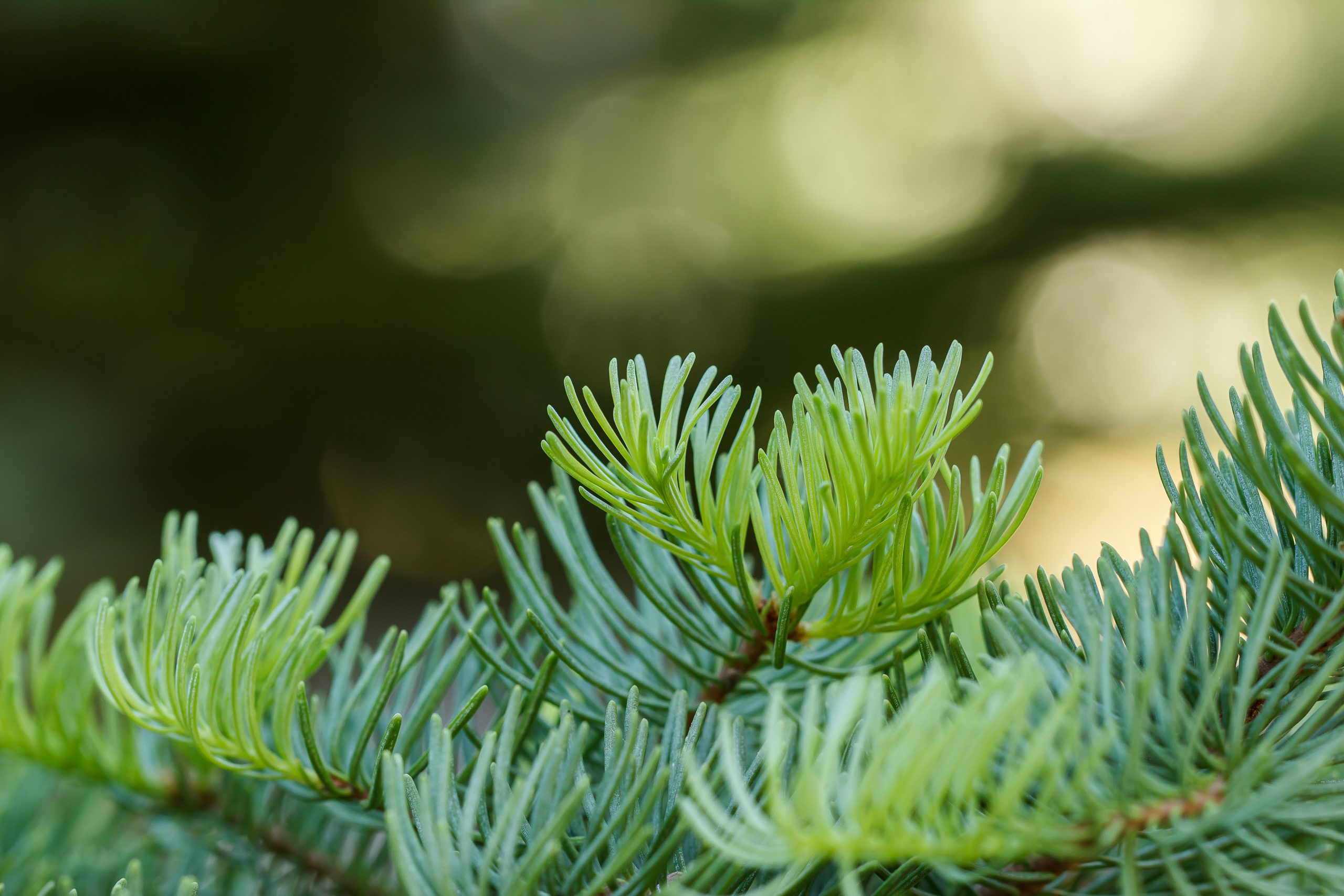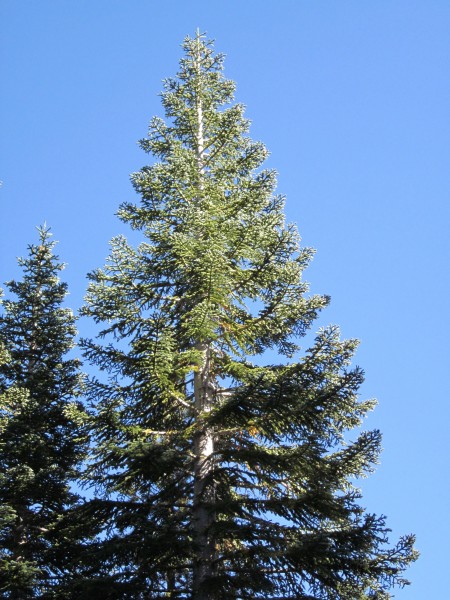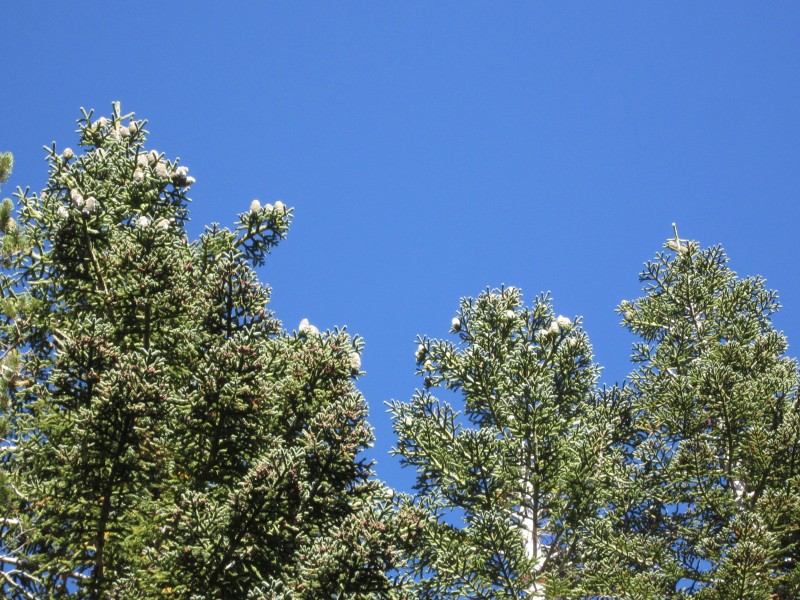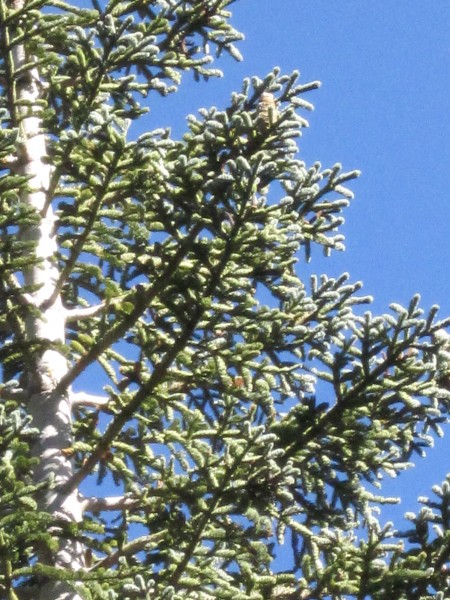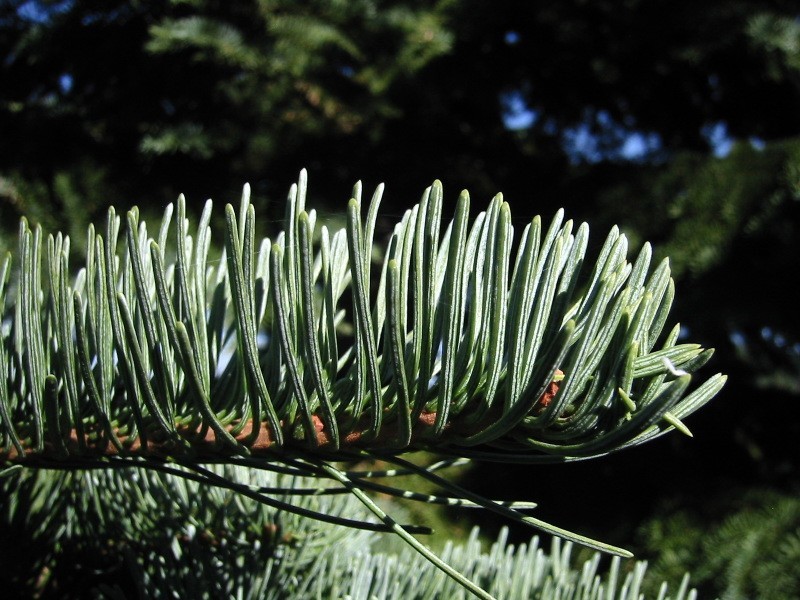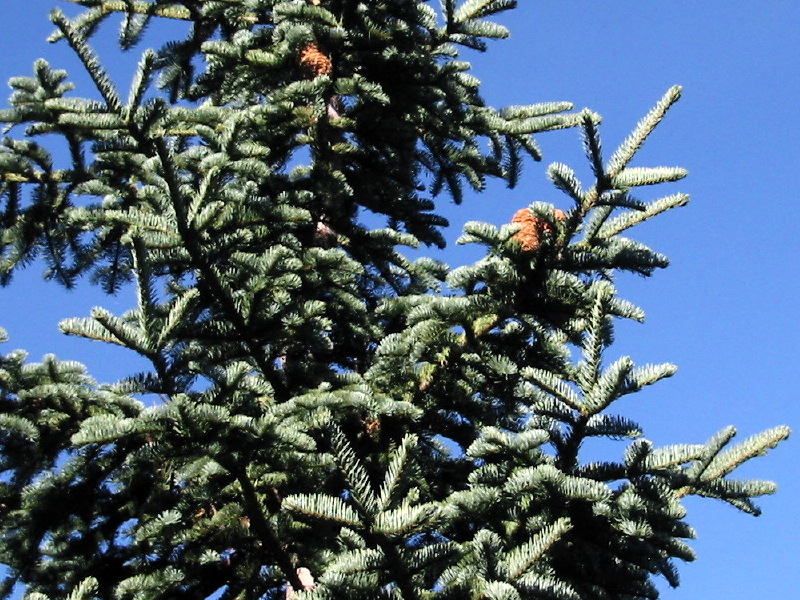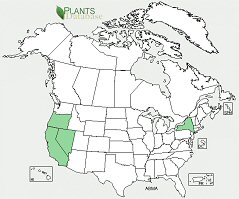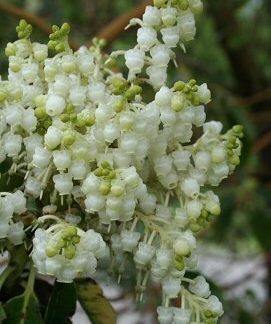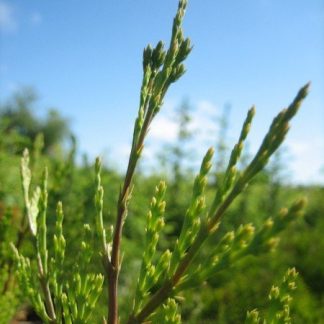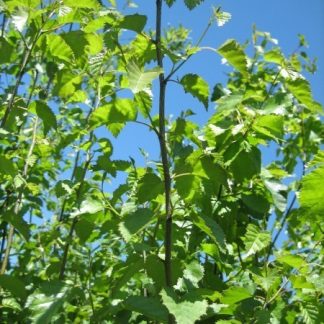Abies magnifica
red fir
Habit: a majestic long-lived evergreen conifer. Abies magnifica has short, nearly horizontal branches and a narrow conical crown. The branches near the top point upward while those near the bottom droop. The distinctive four-sided needles are blunt tipped and silvery-green to blue-green on all sides. The bark of young trees is thin and ashy white becoming thick, deeply furrowed and reddish-brown with age. Male cones are a purple brown color, and densely clustered on the underside of the young branches while female cones are reddish-brown and sit upright on the topmost branches. Seeds are wind-dispersed after cones disintegrate on the trees in late September to mid-October.
Ecology: a high altitude tree, typically occurring at 4600-8850 ft (1400-2700 m), is an important component of natural forests from the Southern Cascade Range in Oregon through the Sierra Nevada of California. Red fir can also be found growing at lower elevations in canyons and other protected places where significant cold air drainage keeps soil and air temperatures low. This magnificent conifer forms almost pure stands at high altitudes along the western slopes of the Sierra Nevada.
Growing Conditions: full sun and rocky, well drained moist soils. Dry warm summers, and cold, wet, winters with heavy snow pack. Survives high frost but has a low drought tolerance.
Red fir is an important tree for watershed protection because of the large amounts of snow that accumulate in these stands during the winter. Its name was derived from the color the bark becomes with age. The oldest specimen was found in the Klamath Mountains and found to be 665 years old.
Specs
Evergreen Coniferous Tree
60-200 ft (20-60m)
2-5 ft (1-2m)
2-6

